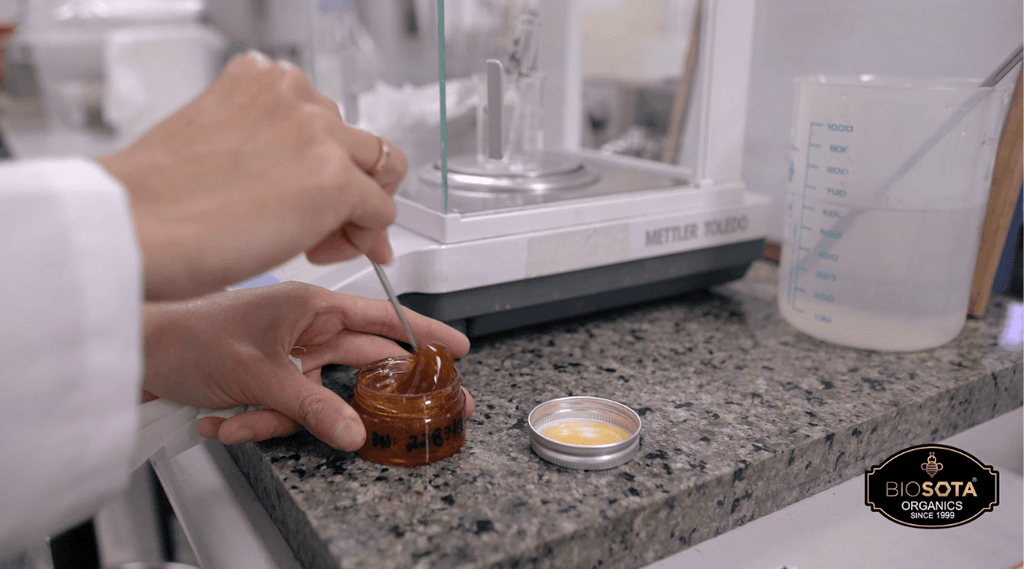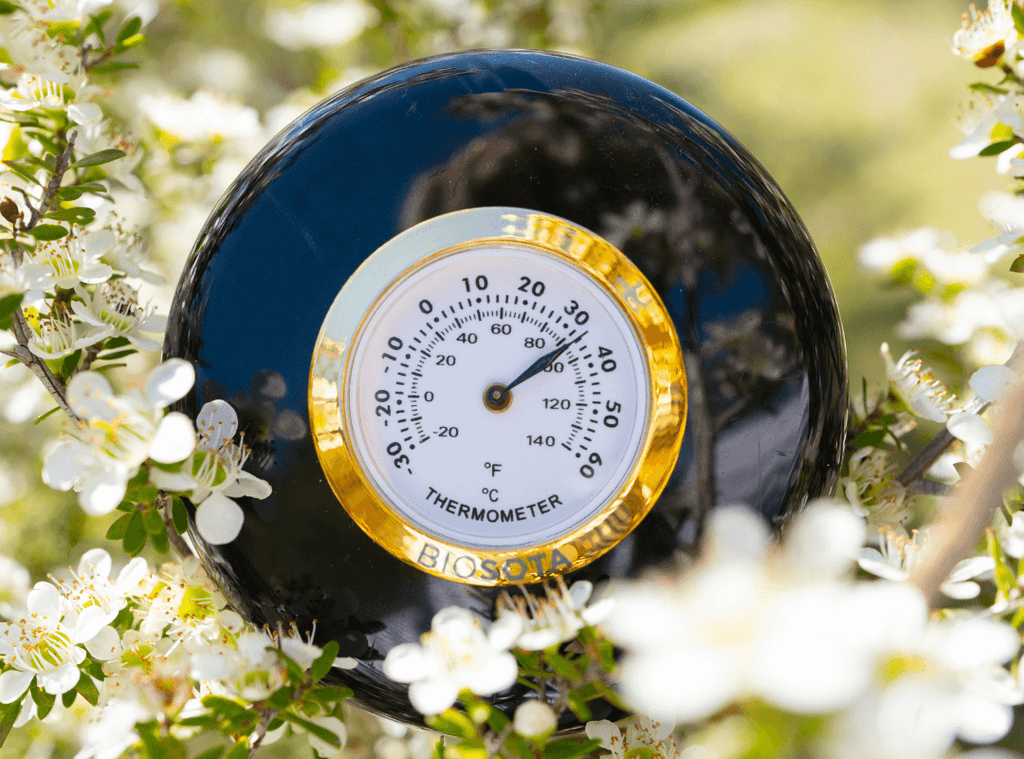Does honey crystallisation, temperature or shelf-life impact the medicinal qualities of Manuka?

Manuka honey has long been used for healing and nutritional purposes. Exhibiting unique antibacterial, antiseptic and antioxidant qualities, it is not only delicious, but also offers potent medicinal benefits.
But can the efficacy of Manuka be affected by factors such as honey crystallisation, temperature, or prolonged shelf-life? Let’s delve in and explore how these elements can affect your honey and what you can do to ensure maximum, long-lasting bioactivity in every jar.
Why does honey crystallise?
Manuka honey is produced from the distinct nectar that bees collect from Manuka trees. It is composed primarily of three types of natural sugar: glucose, fructose and sucrose, which give its sweet taste. While sucrose and glucose are digested quickly giving a quick boost of energy, fructose is released slowly giving longer lasting energy. It also contains trace amounts of vitamins, minerals, and antioxidants, making it a healthier alternative to refined sugar.
When Manuka honey is exposed to cold temperatures (around 10-15°C / 50-60°F), the less soluble glucose separates from the water component in honey and forms crystals - aka honey crystallisation.
Contrary to perception, the crystallisation of pure, raw honey is a natural and harmless process. Taking on a granular, semi-solid or candied appearance, its texture and consistency may change, however the medicinal qualities of this functional superfood remain the same - with no loss of nutrients or healing enzymes.
Honey crystallisation is an indication of its purity
Our high strength MGO-rated Australian Manuka honey is raw, organic and cold-extracted. We purposefully keep it as close to its natural state as possible to preserve the beneficial enzymes and retain its therapeutic effects.
While this means, at times, our honey can crystallise, this is a perfectly natural process and does not affect the quality, taste or efficacy of the honey and it remains safe to consume. Crystallisation can also be easily reversed without harming the bioactive properties of the honey.
How does Manuka honey preserve its potency?
Manuka honey has a long shelf life and with proper storage, the bioactive compounds like Methylglyoxal (MGO) and its precursor Dihydroxyacetone (DHA) and their medicinal properties remain constant over time.
The high MGO strength of Biosota Manuka honey is maintained through the careful cold extraction of our honey from the hive. We also avoid heat in our honey-making process as it may kill natural enzymes and bioactive compounds that make Manuka honey so special.
MGO develops during the natural process of converting nectar into honey. Maximum maturity of Manuka honey is accomplished when dihydroxyacetone (DHA), a precursor chemical compound present in the nectar of Manuka flowers to varying degrees, converts to MGO. When the ratio becomes 1:1, the MGO has completed aging.
Because MGO strength naturally increases over time, we mature our Manuka honey for 12 - 24 months following harvest before bottling. It is essential to do so at the right temperatures to maintain optimal activity levels and ensure its high grade and quality stay entirely intact.
Each batch of our pure Australian Manuka is tested at independent laboratories before packaging to guarantee it contains high levels of MGO/NPA activity and to prove its genuine authenticity.

Do time and temperature affect Biosota’s DHA and MGO levels?
The MGO forecast model by Analytica Laboratories revealed surprising results for our superior grade Manuka honey 1200 and 1700. When stored at temperatures of 20°C (68°F), the measure and potency of MGO and DHA in both kinds of honey remained constant in both raw and well-preserved honey. This remained true whether you stored it for 4 months or a year.
At higher temperatures of 23°C and 27°C, some DHA was converted to MGO and both the bioactive compounds in the matured Manuka honey reduced in quantity and by extension potency over a 12-month period.
The table below illustrates this point.

In a separate study, scientists analysed a range of both raw and processed native Australian honeys, examining the effect of heat and filtration on their antibacterial and antifungal activity. Of the honey types that initially displayed antimicrobial properties, it was found this activity was significantly lower after being heat treated at 45°C (113°F) over eight hours.
While MGO levels are not affected by short-term exposure to higher temperatures (such as those encountered in shipping transit), for best results we recommend you avoid using your Manuka honey in boiling water or in cooking.
Longevity of Manuka honey: From ancient times to today
Storing your honey properly can prevent crystals from forming and prolong the shelf life of your Manuka honey. In fact, research has shown that when stored correctly, honey can keep for thousands of years. A prime example is the 3,000 year old honey that was excavated by archaeologists from King Tut’s tomb in 1922. These jars of honey were found to still be perfectly edible.
In terms of Biosota’s shelf life, our Manuka honey has an ‘Expiry Date’ of five years from packaging to guarantee the MGO rating remains accurate over the lifespan of the product. While the MGO bioactivity rating will naturally fluctuate over time, Manuka honey does not expire and remains safe to consume past the printed Expiry Date.

The best way to store Manuka honey
Factors such as bright light, high humidity and extreme temperatures over extended periods can negatively impact the freshness and nutritional value of honey. So, it’s best to store your pure Manuka in a cool, dark, and dry pantry. This will not only maximise its shelf-life, but will help maintain flavour and prevent crystallisation.
To help preserve the health benefits of compounds like MGO and DHA:
- Keep the honey in its original jar or bottle
- Store it at room temperature for soft, molten honey and to maintain optimal levels of MGO bioactivity over the long-term. The temperature should be around 20°C.
- Keep in the refrigerator for firmer honey or if you live in a hot and humid climate
- Preserve at temperatures below 45°C (113°F) to preserve all the gut-friendly bacteria
For added storage protection, our high medicinal-grade honey is available in Violet Glass Miron jars. These unique biophotonic vessels help preserve your honey and protect its potency by safeguarding it from the harmful effects of UV light.
Moreover, our 500g Manuka honey gift boxes come with a temperature sensor lid, allowing you to monitor its temperature and ensure it is stored in optimum conditions.
Important to note, organic honey rarely turns bad. This is because the prebiotic elements, low moisture content and low acidic pH all act as protective barriers against deterioration.

How to restore crystallised honey to a smooth, flowing consistency
Thick and grainy honey still tastes delicious but if you want that lovely pouring consistency, we suggest you warm it gently via a water bath.
We do not recommend melting in the microwave as this can overheat your Manuka, resulting in a loss of beneficial compounds.
To warm your honey in a water bath, simply follow these four steps:
- Fill a bowl partly with warm (not boiling) water.
- Submerge your jar of Manuka honey in the water (make sure the lid is tightly closed).
- Keep it warm for 10 to 15 minutes until it returns to a liquid state.
- Stir the honey at regular intervals to speed up this process.
If you have any questions on honey crystallisation, storage, shelf-life or about any of our products, please feel free to reach out via our website chat or contact us page.
Disclaimer: Manuka honey is not intended to be a substitute for other medicines or advice. Please consult your healthcare professional before treatment.
References:
- The effect of standard heat and filtration processing procedures on antimicrobial activity and hydrogen peroxide levels in honey
- Discover the oldest honey ever found (from King Tut’s tomb?)
- How to store honey


Leave a comment